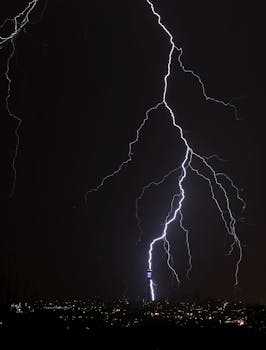
Moody's Analytics chief economist Mark Zandi has issued a stark warning about the U.S. housing market, firing what he calls a "red flare" regarding the potential for a significant downturn. His projections paint a concerning picture, suggesting a substantial correction is on the horizon, impacting everything from home prices and mortgage rates to the broader economy. This warning, delivered amidst already rising interest rates and cooling demand, has sent shockwaves through the real estate industry and sparked intense debate among experts.
The Red Flare: Zandi's Dire Housing Market Predictions
Zandi's forecast isn't a subtle nudge; it's a full-blown alarm bell. He predicts a significant decline in home prices, potentially exceeding 10% in some areas. This isn't just a localized issue; the impact could be felt nationwide, affecting homeowners, prospective buyers, and the entire real estate ecosystem. The severity of the downturn, according to Zandi, depends heavily on the Federal Reserve's actions regarding interest rates and inflation. A more aggressive approach to combating inflation could exacerbate the housing market slowdown, leading to a sharper and more prolonged correction.
Key Factors Contributing to the Impending Downturn:
Rising Interest Rates: The Federal Reserve's ongoing efforts to combat inflation by raising interest rates have significantly increased mortgage rates. This makes borrowing more expensive, reducing affordability for potential homebuyers and cooling demand. The impact of higher rates on mortgage payments is considerable, pushing many potential buyers out of the market.
High Home Prices: Home prices have soared in recent years, driven by low interest rates and strong demand. This has created a market where affordability is stretched thin for many. The current price levels are unsustainable in the face of rising interest rates and cooling demand. This price-to-income ratio needs correction.
Inventory Shortages: While inventory is slowly increasing in some areas, it remains stubbornly low in many regions. This continues to put upward pressure on prices, exacerbating the affordability problem. The current supply and demand imbalance further contributes to the market instability.
Economic Slowdown: Concerns about an impending recession are also contributing to the housing market slowdown. Uncertainty in the broader economy is causing potential buyers to hesitate, further dampening demand.
What Does This Mean for Homeowners and Buyers?
Zandi's prediction raises crucial questions for both current homeowners and those considering buying a home. Homeowners in areas experiencing a rapid price appreciation may face the prospect of negative equity if prices decline significantly. This risk is heightened for those who bought recently at the peak of the market.
Prospective homebuyers face a challenging market. Higher mortgage rates and potentially declining prices present a difficult decision, balancing the desire for homeownership with the financial realities of a potentially correcting market.
Strategies for Navigating a Challenging Market:
Research Thoroughly: Conduct comprehensive research on local market conditions, price trends, and inventory levels before making any significant decisions.
Seek Expert Advice: Consult with a qualified real estate agent and financial advisor to understand the risks and potential opportunities in the current market.
Be Patient and Flexible: The housing market is cyclical. If you're a buyer, be prepared to be patient and flexible in your search.
Monitor Interest Rates: Keep a close eye on interest rates and their impact on mortgage affordability.
Consider Refinancing: For existing homeowners with higher interest rates, exploring refinancing options could be beneficial.
The Broader Economic Implications
The potential housing market downturn extends beyond the real estate sector. A significant correction could have ripple effects throughout the economy, impacting consumer spending, job growth, and overall economic activity. The construction industry, in particular, would be severely impacted by a decline in new home construction.
The interconnectedness of the housing market with the broader economy emphasizes the gravity of Zandi's warning. Policymakers and economists are closely monitoring the situation and considering potential interventions to mitigate the impact of a potential housing market crash.
Beyond Zandi: Other Expert Opinions and Market Indicators
While Zandi's assessment is concerning, it's not the only voice in the debate. Other economists offer varying perspectives on the severity and timing of a potential downturn. However, several market indicators, such as slowing sales, rising inventory in some areas, and weakening consumer confidence, support Zandi's concerns. The overall picture suggests a cooling, and potentially a correction, is underway.
Analyzing data from sources such as the National Association of Realtors (NAR), the S&P CoreLogic Case-Shiller Home Price Index, and the Federal Housing Finance Agency (FHFA) house price index is crucial for forming a complete understanding of current market trends and predicting future performance.
Conclusion: Preparing for the Uncertain Future
Mark Zandi's "red flare" warning is a serious call to action. While the exact extent and timing of a potential housing market correction remain uncertain, the confluence of factors points towards a significant slowdown, potentially even a downturn. Homeowners, prospective buyers, and policymakers must proactively prepare for the challenges that lie ahead. Understanding the current market dynamics, seeking expert advice, and carefully weighing the risks are crucial steps in navigating the uncertainties of the coming months and years. The housing market remains a key indicator of the overall economic health, and its future trajectory will significantly impact the lives of millions.




















